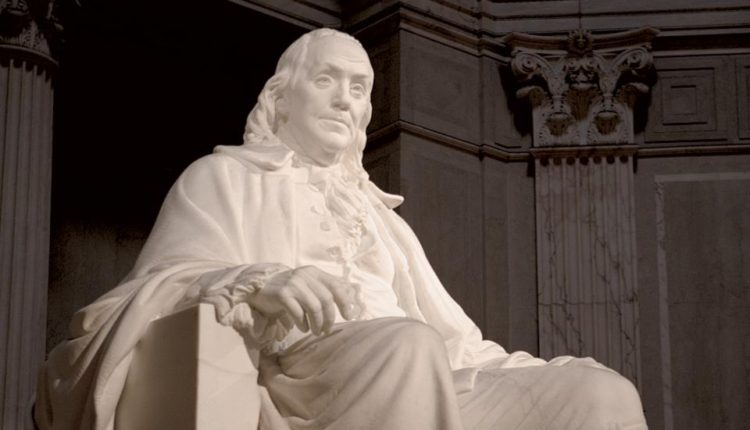
The Republicans against the Republic
Just after the conclusion of the Constitutional Convention, Benjamin Franklin was asked what form of government had been agreed to. “A Republic, if you can keep it,” he famously replied. We are living in a time where that question is being tested again. The Civil War provided the most rigorous test, but with a lawless president in the White House and a Senate unconditionally behind a man without an ethical compass, we are now facing a second tough test.
A Latin American president, once challenged over his unconstitutional acts, responded that the constitution is just a piece of paper. Judging by his actions, this is exactly how President Trump feels about the U.S. Constitution. Given Trump’s lifetime of violating, ignoring, or getting around inconvenient laws and regulations, that is not surprising or even shocking. What is shocking, although not surprising, is the lockstep support among Republican Senators for Trump notwithstanding irrefutable evidence of the president’s multiple impeachable offenses.
There is a sense here of history repeating itself. Most of the strongest supporters of Trump are Senators or former Senators from Southern states, including Lindsey Graham of South Carolina, Mark Meadows of North Carolina, and Jeff Sessions of Alabama. They are not fazed by the fact that by inviting foreign interference in our elections, first from Russia in 2016 and now from Ukraine, Trump betrayed the nation and traded its sovereignty for political advantage.
There is a precedent for this. The entire Southern political class committed an act of treason when it rebelled against the United States and seceded from the Union in order to preserve the malignant institution of slavery. Now the Republicans, with southern Senators in the lead, are betraying the nation again by enabling the survival in office of a chief executive with zero regard and scant knowledge of the Constitution, and contempt for democracy and the people from other countries that have come here to enjoy its blessings.
The reasons for this betrayal are not that different from those that led to the Civil War. The Confederacy was about disuniting the nation for the sake of maintaining a system of white supremacy. Trump is, among other things, about disuniting the nation for the sake of maintaining and restoring white supremacy. In both cases, racism is at the core.
“Make America great again is code”—an easily deciphered code at that—for making America safe for white supremacy. When Donald Trump and his crew talk about freedom of speech, they mean reclaiming the right of engaging in hate speech without consequences. Unlike many democracies that suffered through the Nazi horror and have outlawed hate speech, the First Amendment of the Constitution protects all speech, including hate speech. But it doesn’t protect those who engage in it from popular opprobrium or stinging criticism. Live by the sword, die by the sword. Trump and company whine and posture as victims whenever they get even a small dose of their own medicine. And they go ballistic when an Arab-American calls him by his name: “motherfucker.”
Not all of those who will defend Trump in his bunker onto death are Southerners. Jim Jordan, the man designated by the GOP as the hit man in the impeachment debates, is from Ohio. But he might as well hail from Mississippi. His district is 90 percent white. There are areas in the Midwest and Mountain states that are racially and ideologically akin to Republicans in the South. During the Civil War, there were a considerable number of people in northern and border states who favored the South, some fanatically. They were called copperheads. One of them, John Wilkes Booth, murdered President Abraham Lincoln.
Although slavery was a mostly Southern phenomenon, at various times it existed in parts of the North as well. Racism is not an exclusively Southern legacy. It was foundational to the nation, part of the American DNA. According to Time, in the 1920s, the Klan increased dramatically in the Northern states reaching a membership of 5 million. How that happened is especially relevant today.
“The Klan as it exists today is a more direct offshoot of the iteration that emerged during that time period in the North, often in locations with very small African-American populations. What those places did have was a surge of immigrants coming to the U.S. in the late 19th century and early 20th century. Soon, the racist rhetoric of the original KKK was joined by anti-immigrant rhetoric directed at Catholics (accused of worshiping a Pope who sought to impose authoritarian rule), non-white immigrants like the Chinese and Japanese, and European immigrants not considered white enough, i.e. Italians and Eastern European Jews.” (https://time.caom/4990253/kkk-white-nationalists-history/)
Racism is inclusive and indiscriminate. The same people who are prejudiced toward African Americans are very likely to feel the same toward immigrants, Latinos, Asians, Muslims, you name it. In fact, in the 1920s, during the first great migration which was larger in proportion to the U.S. population at the time than the wave that followed the elimination of racist quotas in 1965, sociologists associated with the celebrated “Chicago School” included a non-existent national group in a survey of attitudes toward immigrants and various ethnic groups. People who had negative feelings about Italians, Jews and others from southern and eastern European backgrounds also expressed aversion toward the fictional group.
There is one thing and one thing only for which I thank Donald Trump. It is that he reminded us all—immigrants, fifth generation Latinos, African Americans, first generation Somalis and all the rest of us “unreal Americans”—of the truth of a statement Benjamin Franklin made at the time of the Declaration of Independence:
“We must all hang together, or, most assuredly, we shall all hang separately.”


